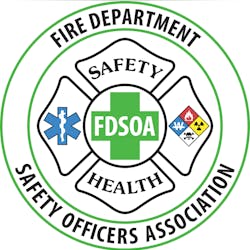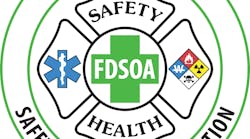SCOTTSDALE, Ariz. – When it comes to apparatus maintenance, Anthony Bulygo, a retired master fire mechanic from Bakersfield, Calif., has only one request of firefighters: tell the mechanic when something changes on your rig.
“You don’t have to be mechanically inclined, you don’t have to know what it is but I need you to be able to recognize the change from the norm,” Bulygo told an audience at the Fire Department Safety Officers Association’s apparatus symposium.
Knowing something is wrong is the first step in making sure fire apparatus stays working as it should, Bulygo said. The second step is doing preventative maintenance, he added.
Too often, people who have financial control over apparatus maintenance only want repairs made to save money, he said.
“The bean counters will say; ‘all you have to do is this, and everything else is a waste,’” Bulygo said. “Well, no it’s not a waste.”
Bulygo is also a big proponent of making sure the people who do work on apparatus are well qualified to do the necessary repairs and maintenance. He said since 1956, Code of Federal Regulations states anyone who works on air, hydraulic, or electric brakes should have a "Federal Brake Card" which proves the mechanic or technician is qualified to perform the brake work.
“If you don’t have it you shouldn’t be touching any of it,” he said.
Too often, Bulygo said he has seen apparatus go in to the shop for repairs for the one item that has placed it out of service and the dozen, or so other items that are broken or don’t work are completely overlooked and the apparatus is sent back out on the road. That shouldn’t happen, he said.
“I am as serious as a heart attack,” Bulygo said noting he has seen that kind of behavior. “It is awful what is going on out there.”
The first line of apparatus maintenance is the firefighters and officers doing the daily inspections on the apron of the station or in the apparatus bay, he said. If a leak is noticed, he would like firefighters to be able to determine if it’s a Class 1, 2, or 3 leak. He described a Class 1 leak as just enough to make dust collect on the affected area, a Class 2 leak is droplets forming and a Class 3 leak is actual dripping.
Then, he would like firefighters to be able to tell him where the leak is located, at least in a quadrant and if someone told him what the leak was, it would make his day, he said.
A fuel leak, for instance, is an automatic out-of-service condition and one that may require a mechanic to investigate at the scene, he said.
Bulygo said another automatic out-of-service condition is if anything to do with the drive system is loose, damaged or missing. That will require immediate attention.
Other conditions that require immediate attention is if the apparatus become overweight, he said adding that rigs must be at or under gross vehicle weight.
“Like all of us, we get heavier when we get older, so does apparatus,” Bulygo said. “When the latest Whamo tool comes out, we have to have it. When the next Whamo tool comes out, we have to have that one too, but we don’t take anything off. There comes a time when we need to put our apparatus on a diet and start pulling some stuff off.”
Tires need to be inspected and in good condition, always, he said, noting that a brand new tire that suffers a sidewall cut to the cords must be replaced. He also said that tires more than seven years old must be replaced as well according to the standards, but he disputes whether that should be part of the standard.
“I think we can all determine whether a tire is in good shape or not,” he said.
Brakes are also up on the top of his list as needing to be 100 percent.
“They should not pull to the right, they should not pull to the left,” Bulygo said, noting brakes should stop the apparatus in a straight line and quickly.
Any exhaust leaks, as noticed by soot on the pipes, must also be repaired and tightened upon discovery.
He concluded by saying vehicles are tools to keep firefighters safe and able to do their jobs and, to complete that mission, they need to be in good repair.
“Vehicles are expendable, people are not,” he said.
More from FDSOA:
- FDSOA's Apparatus Symposium Opens in Ariz.
- FDSOA Symposium: Diesel Emissions Standards Need not be so Scary
- FDSOA Symposium: NFPA 2015 Apparatus Standards Reviewed
- FDSOA Symposium: Politics Play a Role in Apparatus Purchasing
- FDSOA Symposium: Experts Field Apparatus Questions
- FDSOA Symposium: Detroit FD Weathers City's Bankruptcy
- FDSOA Symposium: Apparatus Design Is Important for ISO Ratings
- FDSOA Symposium: Drones Can Be Valuable Tools For Responders
- FDSOA Symposium: NFPA Focused on Alternative Fuel Emergency Safety
- FDSOA Symposium: Graham Lectures on True Risk Managment
- FDSOA Symposium: Pros and Cons of Thermal Imagers Discussed
- FDSOA Symposium: Maintenance is Key to Keeping Apparatus on the Road










